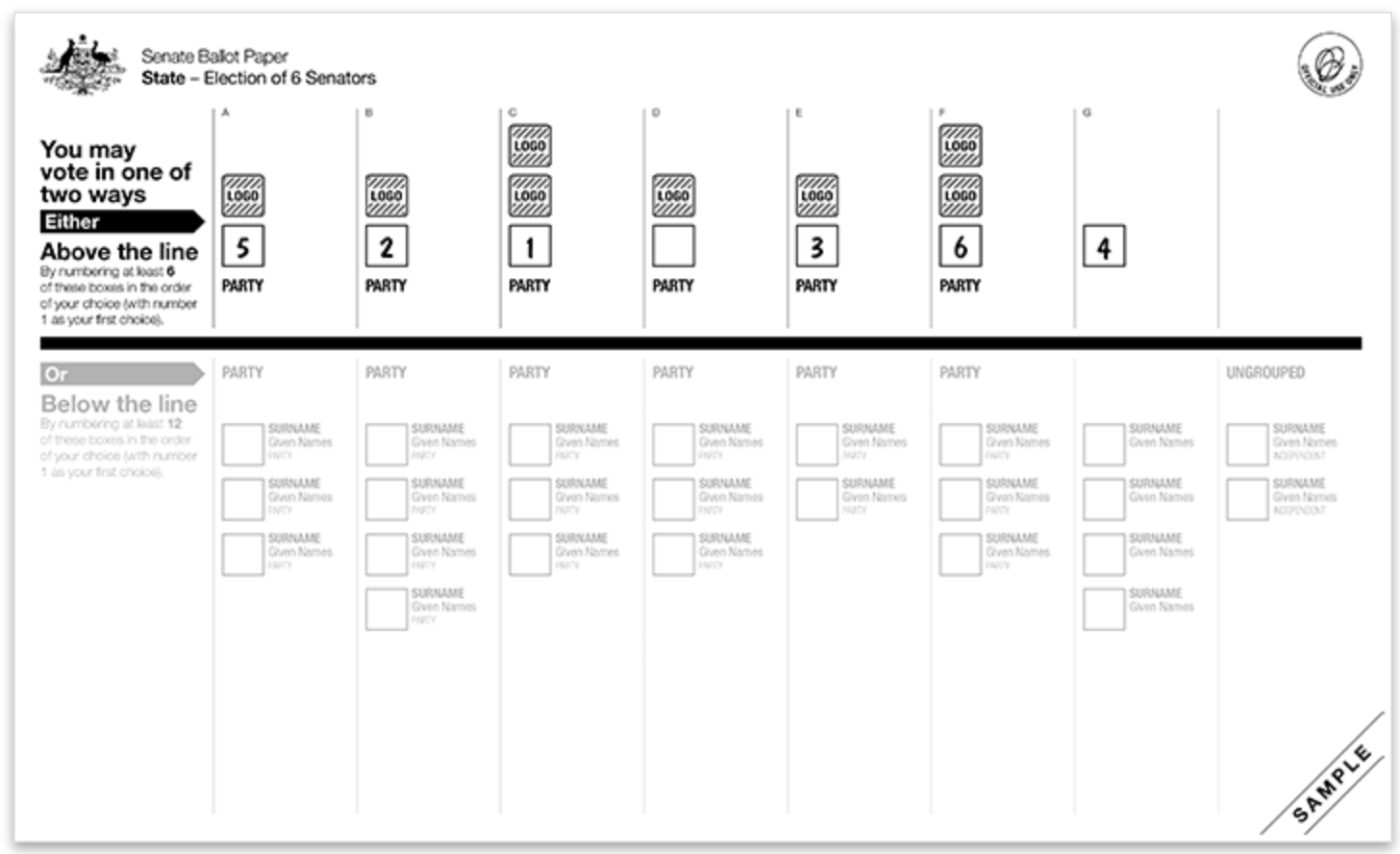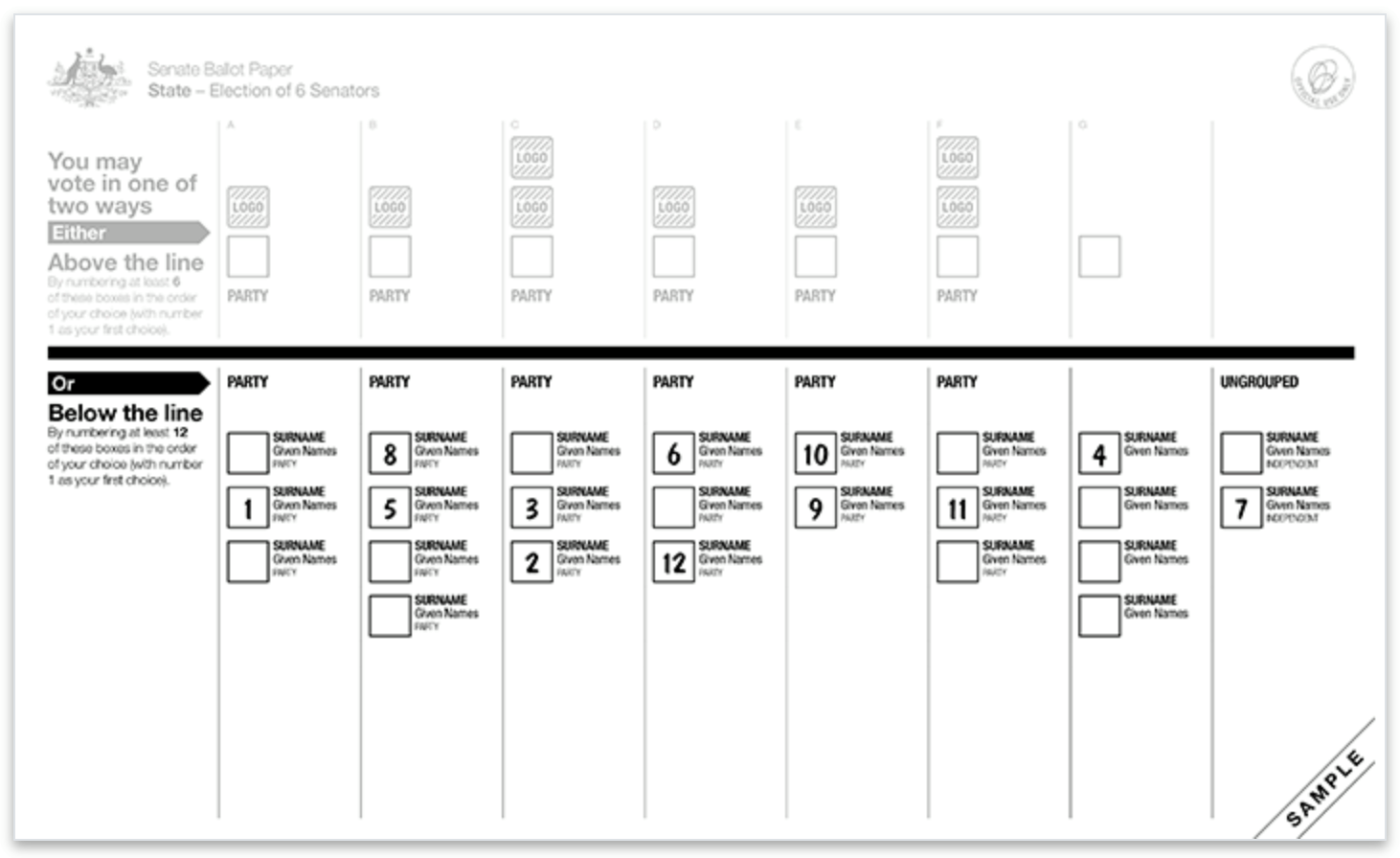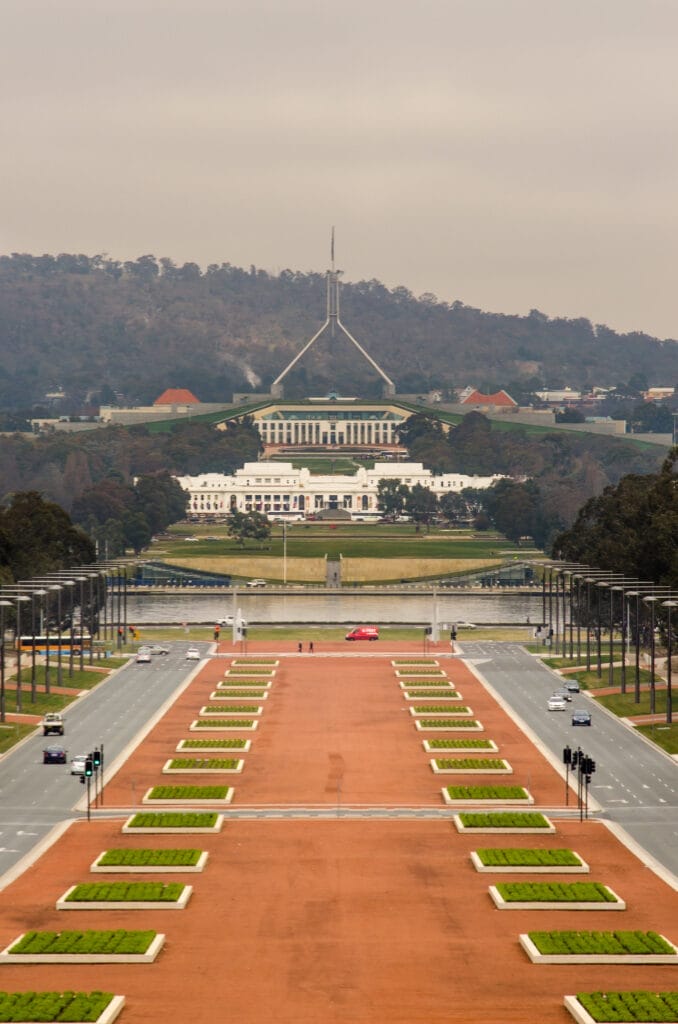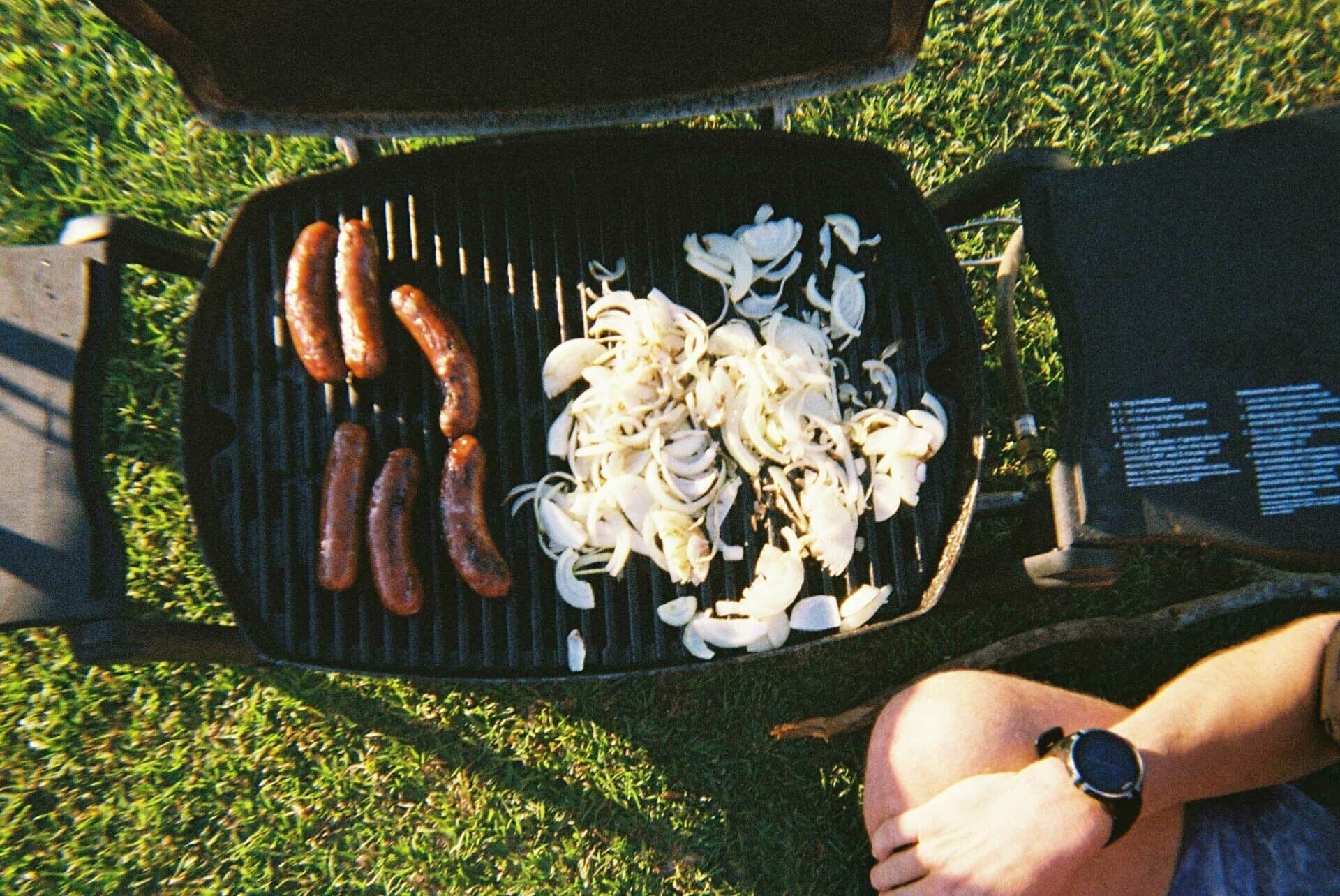

Let’s discuss how to make your vote count and keep counting, thanks to preferential voting. We’ll also look at common mistakes and the sneaky tricks some parties employ because they know it’s confusing as heck.
Remember the last federal election? Me either – 2022 feels like another era – but it’s time again to exercise our democratic right to choose who runs this place.
We’ve covered what each party’s stance is on climate and the environment, but that won’t mean diddly if you mess up your vote, miss the day completely, or get tricked by one of the many common myths surrounding voting in Australia.
If you’re thinking this is pretty weird content for We Are Explorers, you’re right! But it’s a byproduct of us all wanting to protect the planet, and getting people who care in charge is one of the most powerful ways to make that happen.
Let’s dig in, shall we?
How Voting Works in Australia
In Australia we use preferential voting, which basically means you rank everyone in order of preference. Simple right? Kinda…
The House of Representatives – The Green Ballot Paper
This is where Australia forms government. There are 150 seats (roughly one for every 100k Aussies) and a party needs a majority of them – 76 – to win. If no party gains 76 seats, this is a hung parliament which opens up a whole other kettle of fish we won’t get into now.
Most importantly, you don’t vote for a party, you vote for your local Member of Parliament (MP) into one of those 150 seats. They need 50% of the votes to win, and they do if they get half of the primary vote.
If there’s not a clear winner, the candidate who got the least votes is eliminated, and their votes are redistributed. This continues until someone cracks 50% plus one, and that candidate wins.
That’s why it’s important to fill out every box on the green House of Representatives ballot paper. Your vote continues to have an impact even if your first preference doesn’t win.
Heads Up! You have to number every box to make your vote count!

Sample sourced from the Australian Electoral Commission
The Senate – The White Ballot Paper
I always get mad Star Wars vibes from this one. But what does our Senate do? In a nutshell, it checks and passes (or rejects) laws the House of Representatives tries to pass.
The Senate ballot paper looks way scarier thanks to ‘below the line’ voting.
Above the line voting is kind of like voting in the House of Reps. You number each political party (you vote for parties not candidates in above the line voting) until you’ve chosen at least 6.
Don’t want the political parties to choose the candidates? Fair enough! By voting below the line instead, you can preference individuals. You need to choose at least 12 (unless there are less than this) to make your vote count.

Sample sourced from the Australian Electoral Commission
The Power of Preferences
The power of preferences is that no vote is ever ‘wasted’. Your thoughts on different candidates continue to matter even if your first choice had no hope.
It also means that if there are candidates or parties you particularly dislike (perhaps the Burn the Earth party and its leader), you can fill out all of the boxes and make sure that they’re preferenced dead last.
They Vote For You
Politicians say a lot of things. They often say a lot of things, then do a lot of different things, or say different things depending on where they are.
Realistically though, you only need to focus on the MPs in your electorate, and check whether their actions line up with their words.
My favourite new tool is called They Vote For You, an open source website that aggregates data on how politicians vote on issues raised in parliament. You can search by your postcode or MP’s name and check if they’re really putting their votes where their mouth is. Pretty cool right?
Obviously it’s less useful for people who haven’t been elected yet, but it’s a great way to cut through the greenwashing we’re currently seeing on all sides of politics.
How to Vote On Election Day
When’s the election?
The election has been called for Saturday the 3rd of May. You have to vote if you’re an Australian citizen and over 18 years old on election day.
If you’re not enrolled yet, you have until 8pm local time on Monday, 7th of April to add yourself to the enrolment roll or to update your details (including address!).
If you’re unsure where you’re registered to vote, you can also check your enrolment details.
Where do I vote?
At a polling place (generally a school or community centre). You’ll be able to find your nearest polling place on the AEC website. They’re open from 8am-6pm, don’t be late!
What if I can’t vote on election day?
Know you’ll be on holidays on election day? Or maybe you’ll be in hospital? You can vote by post or ahead of time at some polling places, but it must be before the election. There are even interstate voting centres, but best to get it done before you go.
Don’t be like me in a previous state election: I was in Victoria, missed my chance to vote, AND copped a $50 fine. Not ideal.
Who are these people outside the polling place?
Once inside the polling place, election officials will guide you through the process of voting, but outside you’ll probably run into campaigners.
These people often hand out How to Vote cards that suggest which order you should number your candidates in.
Just remember, you don’t have to follow these, even if you support a particular candidate, you don’t have to follow their preferences. Just because a candidate cares about the environment, doesn’t mean their preferences will go to people who do.
Don’t Forget the Sausage Sizzle
Like the sauso at Bunnings, the election day democracy sausage is an Australian tradition. If there’s something different, like a cake stall, then that’s kind of unAustralian, but you should still support the lovely people and their baking. Oh and shoutout to people including vegan sausages and gluten-free bread – inclusive move my dudes!
Voting Myths & Tricks Parties Play
Get this, politicians are allowed to lie in political advertising in Australia. They also employ all other kinds of sneaky tricks.
Longtime We Are Explorers writer Ruby Claire has written a piece about what to look out for, here are some highlights:
- Colour mimicking – signage and flyers imitating the AEC or the colours of independent MPs
- Advertising linking politicians and parties to extremist groups
- Social media posts (by the hundreds) from fake accounts
To Put the Planet First, it’s important to keep your guard up, debunk misinformation, and have 1:1 conversations with people where possible.
Australian Voting Myths
There are heaps, but here are some of the most harmful:
Myth: It doesn’t matter who I vote for, the same party always wins.
Fact: The political landscape is constantly changing. Strong seats have gone to independents before and the trend may continue this year.
Myth: A vote for (insert minor party) is a vote for (insert larger party).
Fact: You control your preferences, not any political party.
Myth: If you make a mistake, your vote is wasted.
Fact: You can ask for a fresh ballot paper. It’s very important to make sure your ballot paper is filled in correctly, otherwise it won’t be counted.
Let’s Put the Planet First
Politics is a murky business, but everyone has the right to have their voice heard. Around 5% of the votes in 2022’s federal election were blank or invalid – that’s over 600,000 votes, or enough to sway the result nearly 3 times over.
Young people, the ones with the most to lose from poor environmental policies, are overrepresented in these figures. I hope this article helps you nail your vote on election day, and if you found it useful please share it with your mates!
Header image by @mdalmuld via Flickr | License










